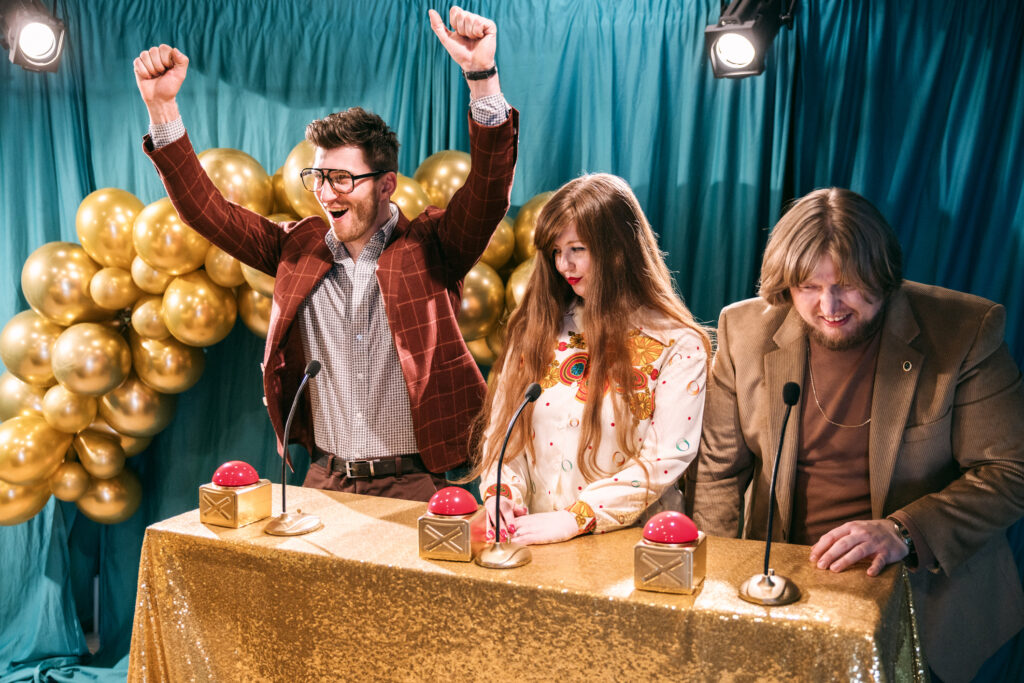Quiz shows have been a staple of television for decades, combining knowledge, competition, and entertainment in a way that keeps us glued to the screen. From black-and-white broadcasts to high-tech game sets, quiz shows have changed a lot over the years. Let’s take a look at how they evolved and became the iconic TV experience we know today.
The Early Days of Quiz Shows
When television first became a household staple in the 1950s, quiz shows were among the earliest programs to hit the air. They were simple—just contestants answering questions for cash prizes—but they quickly gained popularity. Shows like The $64,000 Question and Twenty-One set the stage for the quiz show craze.
The Quiz Show Scandals
By the late 1950s, quiz shows faced their first big controversy. It turned out that some shows, including Twenty-One, were rigged, with producers feeding answers to contestants to create more drama. This led to a major scandal and tighter regulations, but it didn’t kill the genre—it just made it stronger.
The Rise of Trivia-Based Shows
In the 1960s and 70s, quiz shows became more focused on pure knowledge rather than drama. Jeopardy! launched in 1964, introducing a unique answer-and-question format that made it an instant classic. Shows like University Challenge and Mastermind followed, proving that audiences loved a real test of knowledge.
The Big Money Boom
By the 1980s and 90s, quiz shows were upping the stakes. Shows like Who Wants to Be a Millionaire? made it all about high-pressure questions and life-changing cash prizes. The excitement of watching contestants climb toward a million-dollar jackpot kept audiences hooked and made quiz shows feel bigger than ever.
The Game Show Mash-Up
As quiz shows evolved, they started blending elements of reality TV and physical challenges. Shows like The Weakest Link combined trivia with cutthroat eliminations, while Wheel of Fortune mixed word puzzles with luck-based spins. This new twist on traditional formats helped quiz shows stay fresh and exciting.
The Celebrity Factor
At some point, quiz shows realized that adding celebrities to the mix made things even more fun. Whether it was stars playing for charity or famous hosts adding extra charm, shows like Hollywood Squares and Celebrity Jeopardy! brought a whole new level of entertainment to the genre.
The Return of Nostalgia
Some quiz shows never really go away—they just get rebooted. Classic shows like Jeopardy! and Family Feud have stayed relevant by adapting to new generations while keeping their familiar formats. Even game show networks dedicated to airing old episodes prove that nostalgia plays a big role in quiz show success.
The Rise of Interactive Quiz Shows
The digital age brought quiz shows closer to the audience. With apps like HQ Trivia, people could play live quiz shows from their phones and compete for real prizes. Social media also allowed viewers to participate in real-time, making quiz shows more interactive than ever.
The Streaming Era
Streaming services have changed the way we watch quiz shows, with platforms like Netflix and YouTube producing their own versions. Shows like The Circle and Trivia Quest have experimented with new formats, proving that quiz shows can evolve beyond traditional TV.
What’s Next for Quiz Shows?
With AI, virtual reality, and interactive media on the rise, the future of quiz shows is wide open. Whether it’s contestants competing in the metaverse or AI-powered hosts asking the questions, one thing is clear—quiz shows are here to stay, and they’ll keep finding new ways to keep us entertained.
From black-and-white broadcasts to digital-age trivia apps, quiz shows have come a long way. No matter how much they change, the thrill of answering a tough question and watching someone win big will always keep us tuning in.

